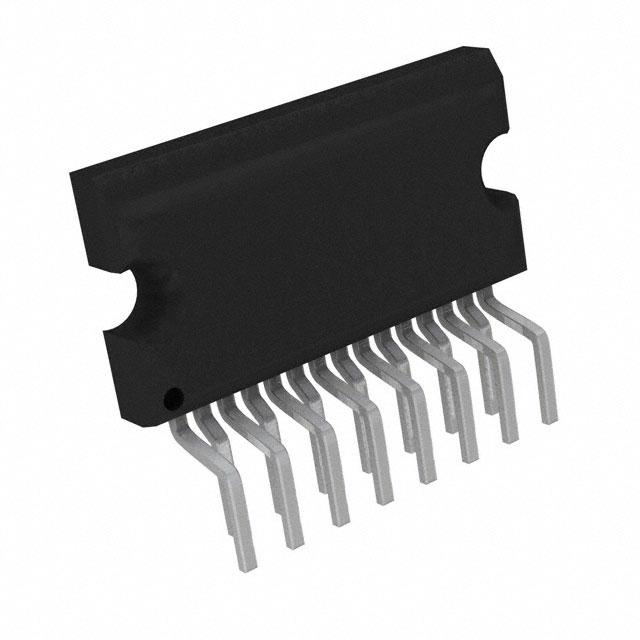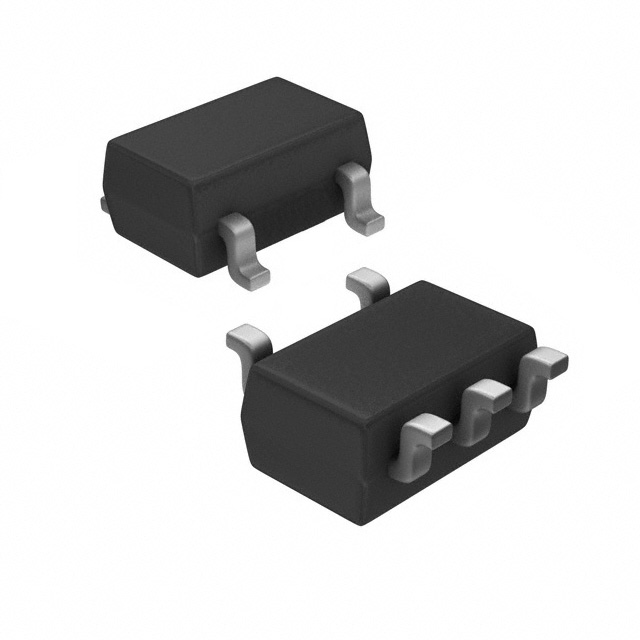Ⅰ. PMIC - Voltage Regulators - Special Purpose
Ⅱ. Physical Characteristics of PMIC - Voltage Regulators - Special Purpose
Ⅲ. Electrical Characteristics of PMIC - Voltage Regulators - Special Purpose
PMIC - Voltage Regulators - Special Purpose
Special-purpose voltage regulators are a category of power management integrated circuits (PMICs) that are designed to meet specific requirements or address unique applications. Unlike general-purpose voltage regulators, special-purpose regulators are tailored for specific tasks and often offer additional features or functionality. Here are some examples of special-purpose voltage regulators:

1.Switching Voltage Regulators: Switching voltage regulators, also known as DC-DC converters, are commonly used in applications where high efficiency, compact size, and precise voltage regulation are required. They convert one DC voltage level to another by switching the input voltage on and off at a high frequency. Switching regulators are commonly found in battery-powered devices, mobile devices, and computer systems.
2.LDO (Low-Dropout) Voltage Regulators: LDO voltage regulators are designed to provide a stable and regulated output voltage with low dropout voltage. Dropout voltage refers to the minimum voltage difference between the input and output for the regulator to maintain regulation. LDO regulators are commonly used in applications that require low noise, low power dissipation, and precise voltage regulation, such as audio amplifiers, RF circuits, and sensor interfaces.
3.Linear Voltage Regulators: Linear voltage regulators are widely used in various applications where simplicity, low cost, and moderate performance are required. They regulate the output voltage by dissipating excess energy as heat. Linear regulators are commonly used in applications like consumer electronics, automotive systems, and industrial control systems.
4.Battery Charger Controllers: Battery charger controllers are specialized voltage regulators designed to charge batteries efficiently and safely. They often incorporate features like voltage and current regulation, charge termination algorithms, temperature monitoring, and battery protection mechanisms. Battery charger controllers are used in a wide range of applications, including portable electronics, electric vehicles, and renewable energy systems.
5.LED Drivers: LED drivers are voltage regulators designed specifically for driving light-emitting diodes (LEDs). They provide a constant current or voltage to the LED, ensuring optimal brightness and longevity. LED drivers are used in lighting applications, displays, signage, and automotive lighting systems.
6.Power Over Ethernet (PoE) Controllers: PoE controllers are special-purpose voltage regulators used in Ethernet networks to deliver power along with data over standard network cables. They combine power sourcing equipment (PSE) and powered devices (PD) functions to enable devices like IP cameras, wireless access points, and VoIP phones to receive power over the Ethernet connection.
7.RF Power Amplifier (PA) Bias Controllers: RF PA bias controllers are used in wireless communication systems to provide precise voltage regulation and biasing for RF power amplifiers. They ensure optimal linearity, efficiency, and output power of the RF PA, contributing to improved signal quality and transmission range.
These are just a few examples of special-purpose voltage regulators. The choice of a special-purpose regulator depends on the specific requirements of the application, including voltage levels, current requirements, efficiency, thermal considerations, and any additional features needed to meet the application's demands.
Physical Characteristics of PMIC - Voltage Regulators - Special Purpose
The physical characteristics of special-purpose voltage regulators, which are part of Power Management Integrated Circuits (PMICs), can vary depending on the specific application and design considerations. However, there are some common physical characteristics to consider:
1.Package Type: Special-purpose voltage regulators are available in various package types, including surface-mount packages (such as QFN, BGA, or WLCSP) and through-hole packages (such as DIP or TO-220). The package type determines the physical dimensions, mounting style, and the number and arrangement of pins for connecting to the PCB.
2.Pin Configuration: The pin configuration of a special-purpose voltage regulator specifies the electrical connections required for proper operation. It includes pins for input voltage, output voltage, ground (GND), enable/disable control, feedback, and other necessary connections. The pin configuration can vary depending on the specific voltage regulator model and package type.
3.Size and Dimensions: The size and dimensions of special-purpose voltage regulators can vary depending on the power handling capabilities, package type, and manufacturer's design choices. The physical size is typically specified in terms of length, width, and height or package outline dimensions. Compact size is often desirable for space-constrained applications.
4.Thermal Considerations: Special-purpose voltage regulators may have specific thermal characteristics to ensure proper heat dissipation. They may feature exposed thermal pads or additional thermal management features like thermal vias or heatsinks. These features help to dissipate heat generated during operation and maintain the regulator's temperature within safe limits.
5.Input/Output Capacitors: Some special-purpose voltage regulators require external input and output capacitors for stability and proper operation. The datasheet or application notes provided by the manufacturer specify the recommended capacitor values and types. These capacitors are typically connected to specific pins on the voltage regulator.
6.Mounting Options: Special-purpose voltage regulators can be mounted on printed circuit boards (PCBs) using various methods, including surface-mount technology (SMT) or through-hole mounting. The mounting method depends on the package type and the assembly process used in the target application.
7.Environmental Considerations: The physical characteristics of special-purpose voltage regulators may include environmental specifications, such as operating temperature range, humidity tolerance, and thermal resistance. These specifications ensure reliable operation under different environmental conditions.
8.Markings and Labels: Special-purpose voltage regulators often have markings or labels on the package to provide identification, part number, manufacturer logo, pinout information, and other relevant details. These markings aid in proper identification and assembly of the voltage regulator on the PCB.
It's important to note that the physical characteristics of special-purpose voltage regulators can vary between different models and manufacturers. Therefore, it is recommended to consult the datasheets, application notes, and technical documentation provided by the manufacturer for detailed and accurate information on the physical characteristics of a specific special-purpose voltage regulator.

Electrical Characteristics of PMIC - Voltage Regulators - Special Purpose
The electrical characteristics of special-purpose voltage regulators, which are part of Power Management Integrated Circuits (PMICs), are crucial for their proper operation and performance in specific applications. Here are some important electrical characteristics to consider:
1.Input Voltage Range: The input voltage range specifies the minimum and maximum allowable voltages that the voltage regulator can accept at its input. This range is important for ensuring compatibility with the power source or supply voltage in the application.
2.Output Voltage Range: The output voltage range represents the range of voltages that the voltage regulator can provide at its output. Different applications require specific output voltage levels, and the voltage regulator should be capable of delivering voltages within the desired range.
3.Output Voltage Accuracy: Output voltage accuracy refers to how closely the voltage regulator can maintain the desired output voltage within a specified tolerance. It is usually expressed as a percentage of the nominal output voltage. Higher accuracy is desirable in applications that require precise voltage levels.
4.Load Regulation: Load regulation refers to the ability of the voltage regulator to maintain a stable output voltage despite changes in the load current. It measures the change in output voltage as the load current varies. Lower load regulation indicates better performance in maintaining a stable output voltage under different load conditions.
5.Line Regulation: Line regulation refers to the ability of the voltage regulator to maintain a stable output voltage despite variations in the input voltage. It measures the change in output voltage as the input voltage varies. Lower line regulation indicates better performance in maintaining a stable output voltage under different input voltage conditions.
6.Output Current Capability: The output current capability specifies the maximum amount of current that the voltage regulator can supply to the load while maintaining proper voltage regulation. It is important to choose a voltage regulator with an output current capability that matches or exceeds the requirements of the load.
7.Efficiency: Efficiency is a measure of how effectively the voltage regulator converts the input power to the output power. It is expressed as a percentage and represents the ratio of the output power to the input power. Higher efficiency indicates less power loss and better energy conversion.
8.Ripple and Noise: Ripple and noise refer to unwanted variations or disturbances in the output voltage of the voltage regulator. These variations can be caused by factors such as switching noise, input voltage fluctuations, or load changes. Low ripple and noise levels are important in applications where a clean and stable power supply is required.
9.Quiescent Current: Quiescent current, also known as ground current or supply current, is the current consumed by the voltage regulator when there is no load connected to its output. Lower quiescent current is desirable in applications that require low power consumption to maximize battery life or minimize power dissipation.
10.Protection Features: Special-purpose voltage regulators often incorporate various protection features to safeguard against abnormal operating conditions. These features may include overvoltage protection (OVP), undervoltage protection (UVP), overcurrent protection (OCP), thermal shutdown, and short-circuit protection. These protections help prevent damage to the regulator and the connected devices in case of faults or abnormal conditions.
It's important to refer to the datasheets, application notes, and technical documentation provided by the manufacturer for detailed and accurate information on the electrical characteristics of a specific special-purpose voltage regulator.



